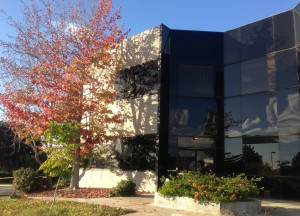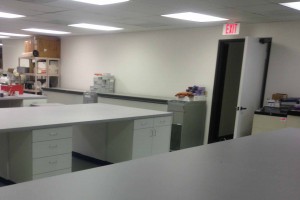Allele Mail Bag
We at Allele Biotech encourage you to help those in need
Typhoon Haiyan (Yolanda) has devastated vast areas in the Philippines and the local people are still suffering, particularly those who had minimum resources even before the disaster hit. Our company’s representatives’ recent trip to the country created a special bond between our employees and the people in the Philippines, and we will do what we can to help, including directly donate to agencies like the Philippine Red Cross. We encourage our clients, colleagues, and friends to do the same. Thank you.
Lab Skills You Stopped Being Proud Of
Molecular biologists who were in graduate school in the 90’s learned how to isolate plasmid DNA from E. coli cultures by a method called “boil-prep” during their first lab rotation. This process involved mixing the bacterial cell pellet in a little bit of detergent, salt and sucrose, dabbed with some fresh lysozyme, and then you are ready to cook, literally! Bacterial cell membranes are disrupted by boiling this soup in a beaker of water over a Bunsen Burner for one minute, and the debris (containing the broken cell membrane and attached chromosomal DNA) is collected by centrifugation in a microfuge at top speed for 10 minutes. Then comes the step that differentiates a true master of lab skills versus a rotation student—if you knew just the right amount of bacterial culture to begin with and handled the E coli pellet by the right techniques, a skillful lab person could collect nearly all the liquid without disturbing the pellet. Pouring out the plasmid-containing supernatant without dislodging the goo on the side/bottom of the tube was such a desirable skill that would not only give you your plasmid but also give you admiration from fellow lab members. That is, of course, if you were doing it before the mid-90’s, because after the introduction of miniprep spin columns by Qiagen, nobody, even the true masters of boil-preps (or its contemporary alkali prep that also involves pelleting by centrifugation and careful removal of tiny volume of liquids surrounding small pellets) would be showing off those skills any longer.
It is actually never easy or fun to collect liquid surrounding small amount of beads or pellets as you always have to struggle to remove as much liquid as possible while trying not to lose any of the beads
Some of the old-timers used to also be very proud of being able to pour a “sequencing gel” (a very thin ~40 cm x 30 cm polyacrylamide gel). I still remember the first time I reported to the second rotation lab at USC. After describing the lab research, the PI showed me around the lab and complained how “Sarah destroyed all my sequencing gel plates”. But consider this, in order to avoid any greasy spot on either plate, you needed to wash both of them fanatically if not religiously. Why? You would have just about a minute’s time to pour non-polymerized acrylamide without leaking from the sides or bubbles forming anywhere in the DNA running lanes, and then inserting a pair of paper-thin combs, all at a speed quicker than TEMED/AP-catalyzed acrylamide polymerization. Good thing that after capillary sequencing was invented, we all happily retired our sequencing-gel pouring skills with a collective sigh of relief.
Technology will always move forward, so will the skills lab researchers will be required to perfect. Using a spin column is very much a “skill-less” technique in contrast to collecting pellets and washing beads after centrifugation, but when there is a choice, people will chose the method that requires “less skills”, such as the spin-column format as the preferred platform for the new FP-nAb™ products.
BTW, like to have information on the spin column kit? Here it is: http://www.allelebiotech.com/gfp-nab-agarose-spin-kit-20-reactions/
Is “100% Conversion” No Longer a Taboo Phrase in the iPSC Field?
“By removing a single protein called Mbd3, a team at the Weizmann Institute of Science in Rehovot, Israel, was able to increase the conversion rate to almost 100%”. A staggering statement written by Monya Baker for Nature News, after her journal’s online publication by Rais et al. reported their discovery. This discovery displays that by removing the expression of nucleosome remodeling and deacetylation repressor complex member Mbd3, all cells can be reprogrammed with the OSKM Yamanaka factors. What we have described last September in Nature’s Scientific Reports (Warren et al. 2012) that by fusing Oct4 with strong transcription activation domain, we achieved essentially the same results which we call “bulk conversion”. One can imagine that the strong transcription activation domain very likely effects such strong reprogramming through some type of chromosomal remodeling indirectly.
As we later learned, people in the field believe that reprogramming is a stochastic event and it is impossible to achieve something like “bulk conversion”. We are happy to see that sea change now that a separate group also demonstrated “bulk conversion”. Recently we have shown that instead of 2 weeks or more, as required when mRNA reprogramming was first reported or commonly practiced, we could start taking up iPSCs around a week without doing any traditional transfection—just change the medium everyday as for all stem cell cultures, with mRNA complex as a supplement to be added together with bFGF.
Knocking-down Mbd3 is potentially useful, especially in situations where we have difficulty reprogramming a particular line, and it could make reprogramming more successful in more demanding conditions such as leaving out B18R as we recently established. However one needs to be cautious about the unavoidable off-target effects of siRNAs when including siRNA against Mbd3 in their RNA mix.
Rais et al. Nature (2013)
New Publication by Allele Biotech Researchers on Adipogenesis
Title:
A Novel pro-adipogenesis factor abundant in adipose tissues and over-expressed in obesity acts upstream of PPARg and C/EBPa
Authors:
Yuhui Ni, Chenbo Ji, Bin Wang, Jie Qiu, Jiwu Wang, Xirong Guo
Abstract:
An important question about adipogenesis is how master adipogenesis factors (defined as being able to initiate adipogenesis when expressed alone) peroxisome proliferator-activated receptor (PPAR) initiate adipogenesis only in differentiating preadipocytes. The objective of our research was to find previously unidentified factors that are unique or highly enriched in cells of the adipocyte lineage during adipogenesis that may provide functional tissue specificity to preadipocytes. We reasoned that such factors may alter expression profile specifically in obese individuals. Omental adipose tissues were obtained from obese and non-obese male patients undergoing emergency abdominal surgery. mRNAs extracted from either group were used for suppression subtraction hybridization (SSH). Genes corresponding to mRNAs enriched in obese versus non-obese patients were identified through sequencing and further analyzed for tissue distribution. Out of ~20 genes, we found several that showed clear fat cell specific expression patterns. In this study, we functionally studied one of these genes, previously designated as open reading frame C10orf116. Our data demonstrated that C10orf116 is highly expressed in adipose tissue and is localized primarily within the nucleus. Over-expression studies in 3T3-L1 cells indicated that it up-regulates the levels of CCAAT/enhancer binding protein a (C/EBPa) and PPARg and promotes adipogenic differentiation starting from the early stage of adipogenesis. Over-expressed in omental tissues from obese patients, C10orf16 manifested the characteristics of an adipocyte lineage-specific nuclear factor that can modulate the master adipogenesis transcription factors early during differentiation. Further studies of this factor should help reveal tissue-specific events leading to fat cell development at the transcriptional level.
Link to the original publication: http://link.springer.com/article/10.1007%2Fs10863-012-9492-6
Here is Allele Biotech’s webpage showing relevant cell and development biology products: www.allelebiotech.com
Allele Biotech Announces Opening of New Facility in San Diego
We’re happy to announce that after a long construction and moving process, Allele Biotech has passed its final inspection hurdle and is now officially open for business at our new location, a two-story building we recently purchased on Nancy Ridge Drive. This facility is located at the heart of the Sorrento Mesa biotechnology cluster and contains two floors of brand new lab space to support production and R&D, plus plenty of room for expansion. We’re also welcoming two tenants, Nano CELLect and MesaTech, as well as the non-profit research institute we helped launch earlier this year, the Scintillon Institute (www.scintillon.org).
For our local colleagues and valued customers, please feel free to contact us to schedule a personal tour of our new facility and to meet with our esteemed group of experts who are always willing to discuss in person, your scientific needs
Keep an eye out on this blog for important dates, promotions and more news and photos from the new facility as we prepare for our upcoming open house! Hope to see many of you then if not sooner!
New Product Notes: iPS reprogramming and transdifferentiation product line including the Potent 6F mRNA Reprogramming Premix, IVT templates for Ascl1, Myt1l and neuro D2 mRNAs.
Allele Biotech Building Front

Categories
- Allele Mail Bag
- cGMP
- Customer Feedback
- Fluorescent proteins
- iPSCs and other stem cells
- nAb: Camelid Antibodies, Nanobodies, VHH
- Next Generation Sequencing (NextGen Seq)
- NIH Budget and You
- oligos and cloning
- Open Forum
- RNAi patent landscape
- SBIR and Business issues
- State of Research
- Synthetic biology
- Uncategorized
- Viruses and cells
- You have the power
Archives
- October 2018
- April 2018
- March 2018
- January 2018
- October 2017
- September 2017
- August 2017
- March 2017
- February 2017
- January 2017
- November 2016
- September 2016
- August 2016
- July 2016
- June 2016
- May 2016
- April 2016
- February 2016
- October 2015
- September 2015
- August 2015
- June 2015
- March 2015
- January 2015
- December 2014
- March 2014
- February 2014
- January 2014
- December 2013
- November 2013
- October 2013
- September 2013
- August 2013
- July 2013
- June 2013
- May 2013
- April 2013
- March 2013
- January 2013
- December 2012
- November 2012
- October 2012
- September 2012
- August 2012
- July 2012
- May 2012
- April 2012
- February 2012
- January 2012
- December 2011
- November 2011
- October 2011
- September 2011
- August 2011
- July 2011
- June 2011
- May 2011
- April 2011
- March 2011
- February 2011
- January 2011
- December 2010
- November 2010
- October 2010
- September 2010
- August 2010
- July 2010
- June 2010
- May 2010
- April 2010
- March 2010
- February 2010
- January 2010
- December 2009
- November 2009
- October 2009
- September 2009
- August 2009
- July 2009
- June 2009
- May 2009
- April 2009
- March 2009
- February 2009
- January 2009
- December 2008
- October 2008
- August 2008
- July 2008




